It is halfway through March, and the fuits of last autumn's labours will soon become visible.
We began to turn our lawn into a meadow some four or five years ago, and while each year has been different, the results have been very good, even better once I understood what I was doing.
The key, is for seeds to make contact with the bare soil when sowing, and without this little or no effect will be seen. That yellow rattle was seen in that first year was more to luck, as I just broadcast the seed and left it were it fell, leaving to fate and nature for seeds to make contact with the soil.
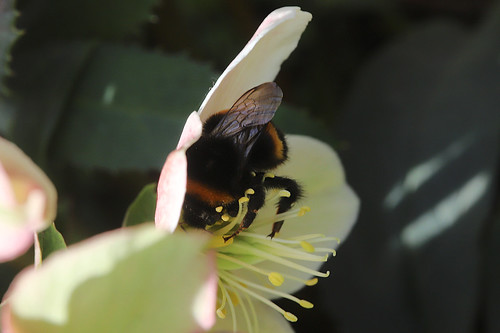
That first year we did get some plants, a good crop at the top of a small section of the lawn, next year I did a larger area, and the reslt was better.
Two years ago, I bought a manual scarifyer, and began to really tackle the dried thatch from that summer's grass and other dead vegetation and moss.
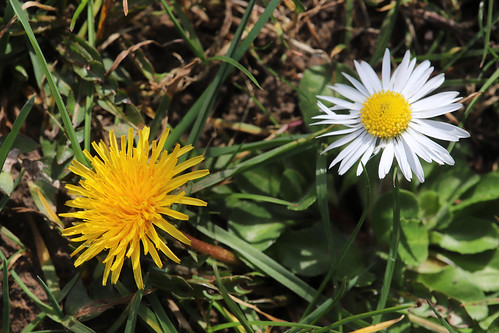
So we come to this year.
More yellow rattle was sown at the top part, as I realise I rake going down hill meaning the seeds and so next years plants migrate down towards the raspberry canes. I have also sown some Corncockle. Corncockle was once a common flower in the countryside, but its seeds turned wheat bitter, so once pesticides were introduced, despite the seeds being easily filtered out of grain, chemicals were used and the plant is all but extinct in the wild.
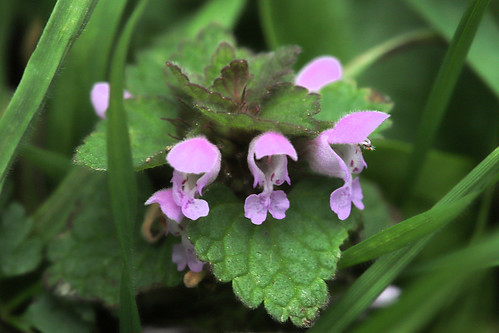
But you can by seeds, and I have sown some, so hopefull come late summer the statuesque stems will be heavy with handsome blue flowers.
Other than that, I look forward to the growing number of cowslips and other wild flowers, and hope our attempted erradication of wild carrot has been a successful one, as they tend to dominate. A few is fine.
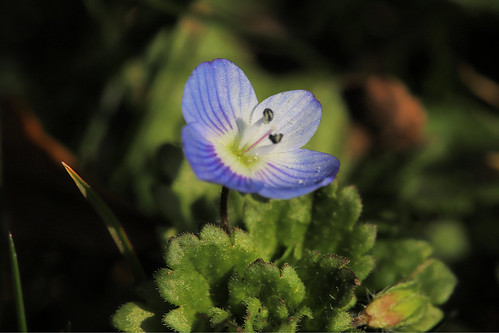
At the moment te lawn is dotted with the blue jewels of Common Field Speedwell and daisies, with a few dandelions showing well too. If you look hard there is small Common Grondsel, red deadnettle and an increasing population of hairy bittercress. I planted a 100 Winter Aconites, many have grown, but only one flowered, the rest came up blind, so far, so we will have to wait until next year to see how that went.
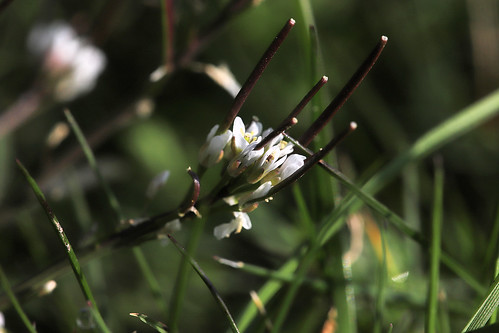
No butterflies as yet in the garden, and a few bees, all bumblebee queens, feeding up before finding somewhere to begin a hive.
All around there is growth, and so we hope there is no late winter cold snap thta brings frost or snow, so our plants can grow and florish, and the last part of the lawn turns into a meadow.
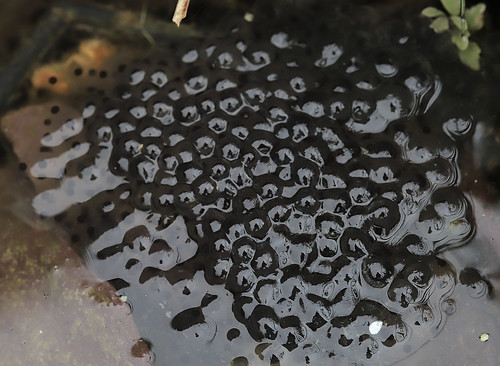
And we have frogspawn for the first time. I check each day to see progress, and I think the black dots in the centre of each spawn is getting longer, hopefully we will soon see movement and then tadpoles.
 That first year we did get some plants, a good crop at the top of a small section of the lawn, next year I did a larger area, and the reslt was better.
Two years ago, I bought a manual scarifyer, and began to really tackle the dried thatch from that summer's grass and other dead vegetation and moss.
That first year we did get some plants, a good crop at the top of a small section of the lawn, next year I did a larger area, and the reslt was better.
Two years ago, I bought a manual scarifyer, and began to really tackle the dried thatch from that summer's grass and other dead vegetation and moss.
 So we come to this year.
More yellow rattle was sown at the top part, as I realise I rake going down hill meaning the seeds and so next years plants migrate down towards the raspberry canes. I have also sown some Corncockle. Corncockle was once a common flower in the countryside, but its seeds turned wheat bitter, so once pesticides were introduced, despite the seeds being easily filtered out of grain, chemicals were used and the plant is all but extinct in the wild.
So we come to this year.
More yellow rattle was sown at the top part, as I realise I rake going down hill meaning the seeds and so next years plants migrate down towards the raspberry canes. I have also sown some Corncockle. Corncockle was once a common flower in the countryside, but its seeds turned wheat bitter, so once pesticides were introduced, despite the seeds being easily filtered out of grain, chemicals were used and the plant is all but extinct in the wild.
 But you can by seeds, and I have sown some, so hopefull come late summer the statuesque stems will be heavy with handsome blue flowers.
Other than that, I look forward to the growing number of cowslips and other wild flowers, and hope our attempted erradication of wild carrot has been a successful one, as they tend to dominate. A few is fine.
But you can by seeds, and I have sown some, so hopefull come late summer the statuesque stems will be heavy with handsome blue flowers.
Other than that, I look forward to the growing number of cowslips and other wild flowers, and hope our attempted erradication of wild carrot has been a successful one, as they tend to dominate. A few is fine.
 At the moment te lawn is dotted with the blue jewels of Common Field Speedwell and daisies, with a few dandelions showing well too. If you look hard there is small Common Grondsel, red deadnettle and an increasing population of hairy bittercress. I planted a 100 Winter Aconites, many have grown, but only one flowered, the rest came up blind, so far, so we will have to wait until next year to see how that went.
At the moment te lawn is dotted with the blue jewels of Common Field Speedwell and daisies, with a few dandelions showing well too. If you look hard there is small Common Grondsel, red deadnettle and an increasing population of hairy bittercress. I planted a 100 Winter Aconites, many have grown, but only one flowered, the rest came up blind, so far, so we will have to wait until next year to see how that went.
 No butterflies as yet in the garden, and a few bees, all bumblebee queens, feeding up before finding somewhere to begin a hive.
All around there is growth, and so we hope there is no late winter cold snap thta brings frost or snow, so our plants can grow and florish, and the last part of the lawn turns into a meadow.
No butterflies as yet in the garden, and a few bees, all bumblebee queens, feeding up before finding somewhere to begin a hive.
All around there is growth, and so we hope there is no late winter cold snap thta brings frost or snow, so our plants can grow and florish, and the last part of the lawn turns into a meadow.
 And we have frogspawn for the first time. I check each day to see progress, and I think the black dots in the centre of each spawn is getting longer, hopefully we will soon see movement and then tadpoles.
And we have frogspawn for the first time. I check each day to see progress, and I think the black dots in the centre of each spawn is getting longer, hopefully we will soon see movement and then tadpoles.

No comments:
Post a Comment